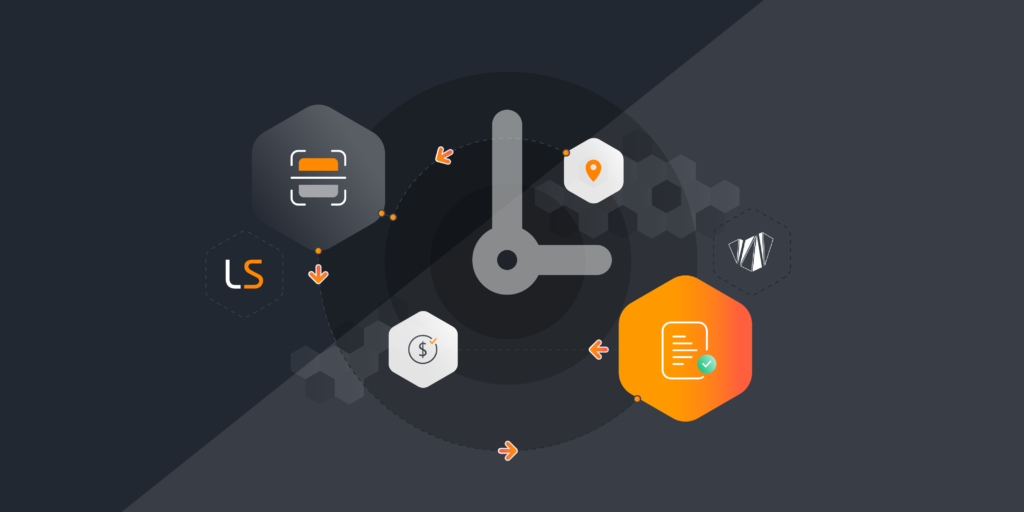
The hybrid workforce is now mainstream, with 74% of U.S. companies implementing or planning to implement a hybrid work model permanently. And studies show that it’s good for business – 63% of high-growth companies have adopted a “productivity anywhere” approach. Employees save time and reduce stress by eliminating long commutes – not to mention the gas savings – and studies show that employees are happier and more productive when given the option to work remotely.
Despite the clear benefits, the hybrid work model poses new and significant challenges for IT organizations, who must track and manage a growing and increasingly dispersed inventory of IT assets. This can be not only challenging but expensive: companies’ average IT spending increased by 6.7% from 2020 to 2021 as they adjusted to employees working remotely. What’s more, the risk of a security incident increased substantially.
According to the 2020 Verizon Business Data Breach Investigations Report, cyber threats rose across the board as businesses transitioned to remote and hybrid work, with credential theft and social engineering attacks causing over 67% of all breaches. What’s more, web application breaches doubled. These types of attacks are far more common among devices that exist outside a company’s security perimeter.
For these reasons and more, it’s essential that businesses have visibility into all of their IT assets, including who’s using them and where they’re located, whether or not they contain any vulnerabilities or need updates, licensing and maintenance status, and so on. All of this data must be easily accessible and actionable, and preferably organized alongside other company data, such as fixed assets, tools, facilities information, leased equipment, and any other asset that the organization owns.
A Comprehensive Platform for Asset Tracking
Identifying and tracking company assets is typically a time-consuming, manual process that requires many phone calls and emails. Recordkeeping is often disjointed and siloed, resulting in duplication and inaccuracies. And as the IT estate continues to expand across an increasingly global and hybrid workforce, it’s harder than ever to maintain visibility into all of the hardware, software and cloud assets connected to the network.
To address these challenges, Asset Panda has integrated Lansweeper’s market-leading IT asset discovery and recognition technology into its comprehensive Asset Management platform. Customers across a wide variety of industries leverage Asset Panda’s highly customizable platform for tracking, auditing and reporting on company assets, eliminating scattered and error-prone spreadsheets, and doing away with manual inventory processes while providing opportunities for optimization and cost savings.
As a Lansweeper Technology Alliance Partner, Asset Panda enables the automatic discovery of an organization’s entire IT asset estate, making detailed IT asset data instantly available alongside other organizational asset data – fixed assets, office supplies, industrial and manufacturing resources, vehicles, tools, facilities, leased equipment and more – all in one place. Organizations benefit from a single and accurate source of truth for all assets across the organization, so they can optimize costs, reduce security risks, and make informed decisions to better serve the needs of the business.
Combining Lansweeper & Asset Panda
Discover, Identify and Understand the Full Lifecycle of All Your IT Assets.
Learn MoreImmediate Insight Across the Entire IT Estate
Lansweeper automatically discovers all hardware and software assets across an organization’s network. Its deep scanning engine and credential-free device recognition (CDR) technology continuously scan the network, providing up-to-the-minute accurate data to Asset Panda. Lansweeper detects all connected hardware assets – workstations, servers, network devices, IoT devices, mobile devices, cloud assets and more – even devices that aren’t properly encrypted and unprotected devices used in remote locations. It can also detect and recognize rogue devices that only touch the network briefly or operate behind a firewall. In addition to information about the hardware assets, Lansweeper provides details about all installed software, including version number, publisher and install date.
By combining the power of Asset Panda and Lansweeper, organizations can access all of their company data – including granular data about every IT asset across the enterprise – in one centralized platform. Customers can rapidly look up and update IT asset information with a quick barcode scan, whether it’s a piece of equipment in the warehouse or an IoT device that connects to the corporate network from a remote location. The two platforms sync automatically, so the data is always accurate and up-to-date, eliminating inconsistencies, and saving IT teams time and effort.
Through the Lansweeper integration, Asset Panda helps customers:
- Gain full lifecycle visibility of their IT assets from purchase to disposal, including maintenance information, user histories and more.
- Improve cybersecurity with actionable insights into potential vulnerabilities and non-compliance issues.
- Review and analyze IT asset data alongside other company data for improved financial and usage reporting.
- Automate recordkeeping and reporting, improving compliance and freeing up IT staff to focus on other business-critical tasks.
Lansweeper’s integration with Asset Panda is just one of the many ways the Lansweeper platform fits seamlessly into your existing technology stack. Learn more about our available integrations here.


